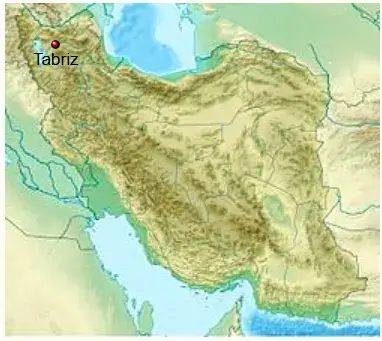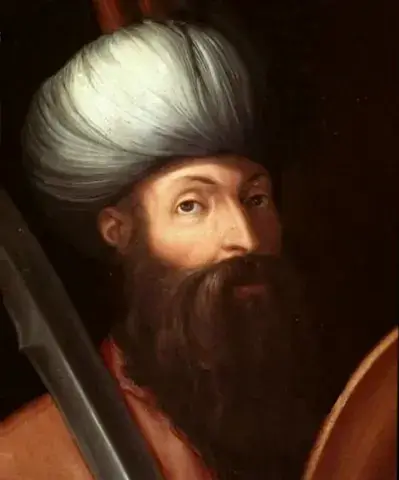Tabriz Rugs

Tabriz is an ancient city on the slope of the
Sahand Mountain, East Azerbaijan province,
Iran. It is the biggest city in western Iran, with
a population of over 1.73 million. Tabriz was
named World Carpet Weaving City by the
World Crafts Council in October 2015. Making it the first capital of the modern Iran,
Shah Ismail the great crowned in Tabriz as the Shah of Persia in 1501 to start a great
revival for the Iranian culture.
As the capital of the first Safavid’s Shahs,
Tabriz attracted lots of artisans who have
made a new way in the Iranian art tradition.
Shah Tahmasb was fond of luxuriant rugs and
used to order them to be given as diplomatic
gifts. He established rug workshops in Tabriz
to serve the purpose and it is said that he
himself was a rug designer.

Shah Tahmasb
The second boom of Tabriz rug production
occurred in the 19th century. Beside the rug
weaving tradition, Tabriz has been well-
known as a center for rug trading. The Tabrizi
merchants established rug workshops which
were the first non-royal ones in Iran. Being
located on the route to Trabzon and Istanbul,
the city has been also the main gathering
place for European rug traders. Still vivid and active, the Bazaar of Tabriz is
one of the oldest bazaars in the Middle East
and the largest covered bazaar in the world. It
is one of Iran’s UNESCO World HeritageSites, attracting tourists from all over the
world, especially to its rug souk.
Technical aspects and the structure of Tabriz Rugs
Tabriz rugs are mostly two-wefted with
Turkish/symmetrical knots. Nap is mainly
woolen or silken and warp and weft are of
cotton or silk threads. The wool come mostly
from Maku. It is rough and bristly. Rezaeih,
Khoy and Salmas, too, produce wool, but not
as much as Maku, thanks to its rich pastures.

Tabrizi weavers have their own kind of loom
which is famous as Tabriz loom. Kilim-
weave of Tabriz rugs is also unique and
known as Turkish style which is more elegant
than the common rustic style.
Workshops in Tabriz are mostly spacious,
bright and clean, with fresh air and good
standards of hygiene.
Dyeing and painting of Tabriz rugs

Profited by both herbal and mineral dyes of
Azerbaijan’s mountains, the Tabrizi dyers
have succeeded to attain different shades of
each color. So the rug painters of Tabriz
enjoy a wide range of colors on their pallets,
and making various compositions with this
range is their absolute profession. It is mostly
the very liveliness of the colors that catches
Tabriz rug lovers’ eyes.
Natural dyes include: Madder, coccus, reseda
and indigo. There is a kind of grey mineral
dye which is mined out of Mishe Pareh Mines
and it is called Khak Siah (namely Black
Earth).
Designs and patterns of the Tabriz rugs
Tabriz designs are the result of the admixture
of elements from all over Iran. Kerman
medallions, Mashhad Lachaks and Kashan
margins gather to form something unique and
new.
Eslimi (Arabesque), Shah Abbasi and
Medallion are the major designs in Tabriz.
Other common designs are: Shekargah
(Hunting Garden), Sheikh Safi, Landscape and Four Seasons, Vase, Fish, Draxti (Tree),
Qabi (Frame), Xitai and Gol Farang.


